By James Dawson
For this article, I thought it might be interesting to look at not only how a gentleman’s library had changed through the years, but perhaps how the gentlemen have changed as well. So let’s look at some gentleman’s libraries in the 1700s, 1800s, and now.
Back to the 1700s
Of the several definitions for a gentleman in the 1700s, I believe that a man of culture and education would best suit. It also helped if you were a man of wealth and leisure. And add to that the presumption of some education because why else would a gentleman want to have a library? But note that I said presumption of education because perhaps our gentleman likes to show off that he has books, but perhaps has not read all of them. Or even any of them. Because books were expensive in the 1700s, only someone well heeled could have enough money to have a library.
One of the best known periodicals then was titled The Gentleman’s Magazine, published in London, which featured interesting articles on just about everything. This was the first literary magazine to use the name “magazine” which in this case was used because it was a storehouse of information (instead of ammunition and guns). It ran from 1731 until its demise in 1922 either because there were no more proper English gentlemen left to read it or their interests had turned to other matters.
Let’s see what books might have been on the shelves of our typical English gentlemen in the 1700s. Some of his titles would have been Don Quixote, John Bunyan’s Pilgrim’s Progress, Machiavelli’s The Prince, Shakespeare, the Bible (the King James version, probably), Tristram Shandy by Laurence Sterne, Robinson Crusoe by Daniel Defoe, Tom Jones by Henry Fielding, Candide by Voltaire, Paradise Lost by John Milton, Gulliver’s Travels by Jonathan Swift and Joseph Andrews by Henry Fielding.
It is astonishing that all these classics are still in print, many still part of our culture. Don Quixote was the slightly mad Spanish nobleman who, among his other antics, attacked windmills thinking them monsters. Don Quixote was probably the world’s first great picaresque novel. I still sell copies of it and Pilgrim’s Progress (religious inspiration), The Prince (political machinations), Robinson Crusoe (adventure) and, of course, the Bible. The Bible is the most printed book ever. It is estimated that between 1815 and 1975 five BILLION copies have been printed (think what the author’s royalties would be)!
The 1700s Gentlemen on this Side of the Pond
I’ve seen two gentleman’s libraries on this side of the Atlantic. Thomas Jefferson’s at his house Monticello and the library of the Lloyd family at Wye House about a half hour or so from my shop in Talbot County, Maryland.
It is Jefferson’s second library that we see at Monticello now. He sold most of his first library, some 4,000+ books, to the country to replace the books in the Library of Congress that the British burned along with the White House and much of Washington during the War of 1812. That was a good deal for us, plus if you were a book lover like Jefferson, you had the pleasure of buying your favorite books all over again.
Jefferson was fond of the ancient Roman historians, especially Herodotus and Thucydides. His favorite novel was The Life and Opinions of Tristram Shandy, Gentleman by Laurence Sterne which he was reading to his wife on her deathbed the night she died. It is a completely goofy novel written in a steam of consciousness style way ahead of its time. Tristram isn’t even born until halfway through the book.
Edward Lloyd V owned over 800 books and pamphlets, tens of thousands of acres of land and hundreds of slaves to farm them for him. About as many slaves as he had books. His library included books on the classics, architecture, science, government, hunting, you name it. Books were an indicator of status and education, as not everyone could afford one book, let alone hundreds. If common people had any books at all, they were probably just a Bible and an almanac.
Lloyd’s copy of Palladio’s Four Books of Architecture helped provide plans for their mansion. The Lloyd library was the result of the accumulated book collections of generations of Lloyds. In 1796, it was the largest library in Maryland. Edwin Wolf wrote an article about the library in 1996 that is still at Wye House. Note that Wye House is still privately owned and not often open for tours.
As Gentlemen Change to the Industrialized 1800s
The Lloyds typified the elite landed gentry class in the 18th century in the U.S., but with the arrival of the bustling, noisy, increasingly industrialized United States of the 19th century and its crop of self-made men, some of the rags to riches variety greatly broadened who a gentleman was and what books were on his (or her) shelves. Also with the spread of public schools and the arrival of mass printing and cheap books and newspapers, almost anyone could be educated and have a library.
But not one of this new crop of rags to riches gentlemen was more raggedy than Frederick Douglass, who had been one of the slaves on the Lloyd plantation. When he was a boy, he often saw Edward Lloyd V riding by on his horse.
As soon as young Douglass understood the value of books, he learned how to read and write, literally one letter at a time. No small accomplishment considering that he never spent a day in school. While it was not against the law in Maryland to teach a slave to read and write, it was strongly discouraged, because as Douglass knew, reading and writing could literally set you free. In fact after Douglass learned to write, he wrote a pass giving himself permission to travel when he escaped. That was why slave owners did not want educated slaves.
One of his first books, The Columbian Orator, was a collection of famous political speeches, poems and orations throughout history. The book is all but forgotten now, but was a best seller in the early 1800s and went through 23 editions totaling 200,000 copies. Douglas secretly saved his money and bought a copy for 50¢ in Baltimore, circa 1830. It taught him how make speeches, and the dialogue between a slave and his master in which the slave wins the debate served him well on the anti-slavery lecture circuit.
Douglass’ library grew from some torn-out pages from a Bible he found in a gutter to over a thousand books on all subjects, literature, religion, government, science and history, including complete sets of his favorite authors Shakespeare, the poet Robert Burns and Charles Dickens (doubtless Douglass could identify with the poor orphan boys in Dickens’ novels) and of course the majestic language and inspiration in the Bible. These books probably would have been in any gentleman’s library, but the three books that Douglass wrote and the 16 bound volumes of the anti-slavery newspapers that he published and edited probably would not have been in the Lloyd library!
One sad night in 1872 Douglass’ house in Rochester NY was destroyed by fire. It was probably arson, but no one was ever caught. Douglass was not home at the time, but his family and friends saved what were his most valuable possessions: his books, which were carried out and stacked in the yard even as the house was burning. You can see Douglass’ library today at his house Cedar Hill in Washington D.C.
Even in the 19th century with the rise of public education, many successful self-made men had little or no formal education. Farmers’ sons dropped out of school early to work on the farm after learning the basic three Rs, and some very bright people quit because they were bored. But for some of them, no matter how successful they became, sometimes had felt self conscious because they lacked a formal education. Of course, being educated to the nth degree doesn’t guarantee success, but it usually helps and if nothing else can result in a more well rounded and polished individual.
For many of these folks, a personal library was a necessity. If you had education already, you probably wanted your own copies of the books you loved. And if you lacked higher education, you could educate yourself with your books. And if you weren’t a reader, a large personal library could be used to impress people that you had learning and culture, even if you didn’t.
And On to the 1900s
One late 19th / early 20th century millionaire with a huge library who was not a traditional gentleman or even a gentle man either was financial tycoon J.P. Morgan, one of the richest and most powerful men in the U.S. He could be ruthless when necessary and quite capable ofcrushing his rivals. Apparently his only talent was making money.
Morgan made so much money that he didn’t know how to spend it. He actually hired experts in many fields to advise him how to spend his money to acquire art and culture. But anyone who was rich could buy rare books like the 1623 first folio of Shakespeare as trophies to put on their shelves, so Morgan would out-do them and buy original manuscripts as well. Hundreds and thousands of them!
The Morgan Library still exists and houses one of the greatest collections of medieval manuscripts in the western hemisphere. Plus early books, in many languages, on literature and history along with drawings by old masters. Its copy of the 1483 edition of Aristotle’s Opera has been called the most magnificent printed book in the world. Unlike Douglass, it is not likely that Morgan actually read many (or any) of them – especially the medieval manuscripts that were written in Latin. The Morgan library is still growing and has over 11,000 original manuscripts and has probably doubled in size since Morgan’s death in 1913.
One interesting item in the Morgan library that he certainly never read are the two million word manuscript journals of author Henry Thoreau. Thoreau’s Walden or Life in the Woods celebrated the simple life and his lifestyle was certainly the polar opposite of Morgan’s. Thoreau had a modest library in the tiny one room house that he built himself by Walden Pond. He was especially interested in poetry, literature, history and travel. One item on his shelves was an 1822 edition of the works of John Milton (he quoted a few lines from it in Walden). That very set is now in my library (so I must be a gentleman, right?).
Probably Morgan had never heard of Thoreau and simply authorized the purchase of his journals on the advice of his librarian when they came on the market. I would give five dollars ($5) to know what Morgan would have thought of Thoreau and his simplistic life style if he had ever heard of him. Probably it would not have been printable! Ironically, in 2017 the Morgan Library hosted a Thoreau exhibition in their beautiful Renaissance style building designed by architect Renzo Piano.
Zoom To the 2000s
Now can we imagine what books would be on the shelves of a 21st century gentlemen? Probably not copies of Don Quixote, Tristram Shandy or The Columbian Orator. More likely The Internet For Dummies, Born to Run by Bruce Springsteen (seriously, with apologies to the Boss, I actually saw this title on two lists of recommended reading), Fifty Shades of Gray, The Hunger Games, Harry Potter, and so forth. There’s even a series of books called How to Be A Gentleman put out by Brooks Brothers with such sage advice as “A Gentleman does not hesitate to screen his calls.” I’m not saying that these books aren’t excellent in their own way (I loved the Harry Potter books), I’m just not sure they will be remembered 200 years from now as monuments to our culture. But who knows!
The Gentleman’s Library Through the Ages
As part of this issue on The Reading Room, we turned to reader favorite James Dawson, author of the column “Collecting Old and Rare Books,” to give us an idea of what books would be included in a Gentleman’s Library, written in his usual entertaining and knowledgeable style.

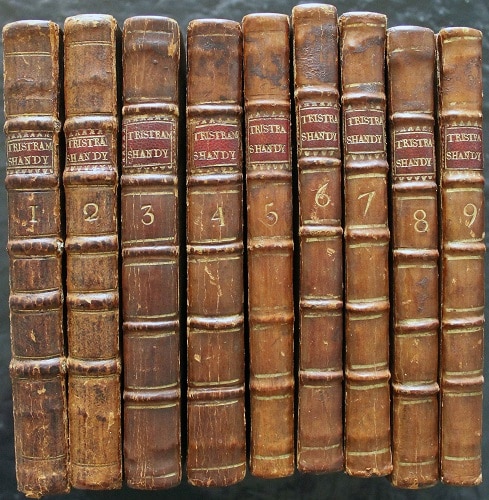

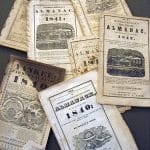
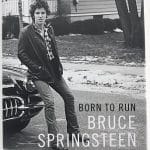

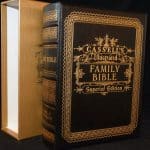

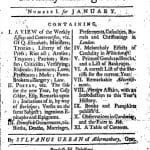

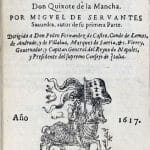
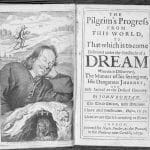
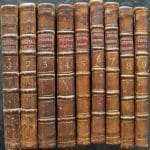


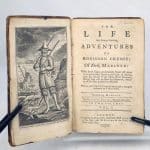
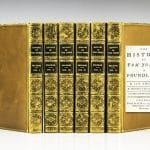

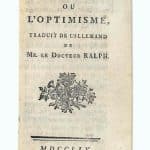
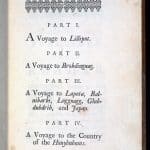
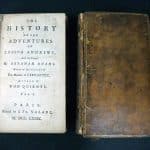

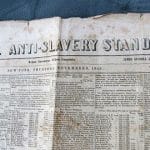


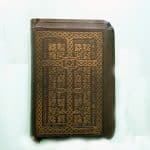
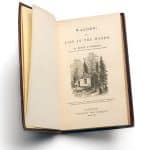
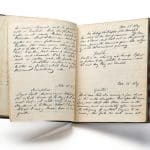



Related posts: